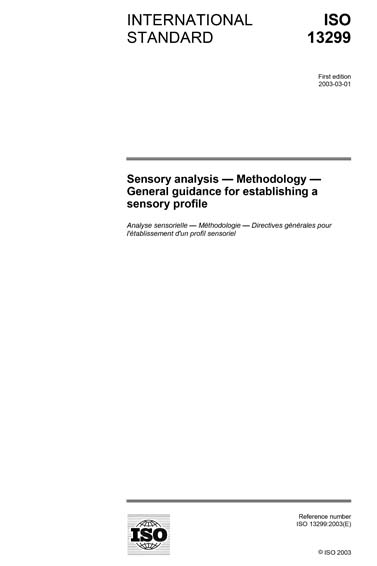Historical
ISO 13299:2003
Sensory analysis - Methodology - General guidance for establishing a sensory profile
ISO 13299:2003 describes the overall process for developing a sensory profile. Sensory profiles can be established for products such as foods and beverages, and can also be useful in studies of human cognition and behaviour. Some applications of sensory profiling are:
- to develop or change a product;
- to define a product, production standard or trading standard in terms of its sensory attributes;
- to study and improve shelf-life;
- to define a reference fresh product for shelf-life testing;
- to compare a product with a standard or with other similar products on the market or under development;
- to map a product's perceived attributes for the purpose of relating them to factors such as instrumental, chemical or physical properties, and/or to consumer acceptability;
- to characterize by type and intensity the off-odours or off-tastes in a sample of air or water (e.g. in pollution studies).
Content Provider
International Organization for Standardization [iso]






